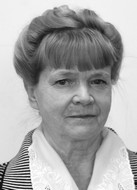Physical rehabilitation and activation tools in post-stroke rehabilitation period
Фотографии:
ˑ:
PhD, Associate Professor J.E. Firileva
Herzen State Pedagogical University of Russia, St. Petersburg
The study analyses the physical rehabilitation and activation tools applicable in a post-stroke rehabilitation period to cure the movement patterns in patients. The physical activation tools include special physical exercises from different gymnastics disciplines with health and corrective emphasis. We applied a 5-point rating scale to rate the rehabilitation progress in the upper and lower limbs, sitting and standing postures, walking skills, a variety of physical qualities and practical skills. The study found that the post-stroke activity is lowermost in the primary (acute) rehabilitation period followed by an assistance-required period when the patient is helped by a physical therapist, health personnel and family.
In the first 6 post-stroke months, the motor progress is normally limited followed by the second period (up to 1 year) most favourable for further progress in every aspect, with increased self-reliant activity recommended to the patients. In the next adaptation period (up to 2 years and more), the motor activity and movement stability tends to further grow up to the possible best level rated by 5 points. The post-stroke physical rehabilitation and activation model was found beneficial for recovery of the movement patterns.
Keywords: motor activity, cerebral stroke, pedagogical control, acute, rehabilitation and adaptation periods.
References
- Galkin A. S. Puti povysheniya reabilitatsionnykh meropriyatiy u bolnykh, perenesshikh ishemicheskiy insult. Avtoref. dis. kand. med. nauk [Ways to increase rehabilitation measures for patients after stroke. PhD diss. abstract]. 2015, 27 p.
- Kovalchuk V. V. Reabilitatsiya patsientov, perenesshikh insult [Post-stroke rehabilitation]. Moscow, 2016, 328 p.
- Milyukova I. V., Evdokimova T. A. Lechebnaya fizkultura: teoriya i metodika [Exercise therapy: theory and practice]. Rostov-on-D., 2002.
- Norbekov M., Khvan Yu. Uroki Norbekova. Doroga v molodost i zdorovye [Norbekov's lessons. The way to youth and health]. St. Petersburg: Piter publ., 1999, 192 p.
- Robenesku N. Neyromotornoe perevospitanie [Neuromotor reeducation]. Transl fr. Rum. Dr. S. Duvan. Bucharest: Medical publ., 1978, 268 p.
- Filippova S. O. Podgotovka doshkolnikov k obucheniyu pismu. Vliyanie spetsialnykh fizicheskikh uprazhneniy na effektivnost formirovaniya graficheskikh navykov [Preparing preschoolers for learning writing. Effect of special physical exercises on efficiency of graphic skills building]. St. Petersburg: Detstvo-Press publ., 2004, 94 p.
- Firileva J. E. Pedagogicheskie aspekty neyromotornoy reabilitatsii lits, perenesshikh insult [Educational aspects of post-stroke neuromotor rehabilitation]. Moscow: RANH publ., 2015, 152 p.
- Firileva J. E., Zagryadskaya O. V. Pedagogicheskie tekhnologii domashney reabilitatsii pri insulte [Educational technologies of home post-stroke rehabilitation]. Moscow: RANH publ., 2017, 242 p.




 Журнал "THEORY AND PRACTICE
Журнал "THEORY AND PRACTICE